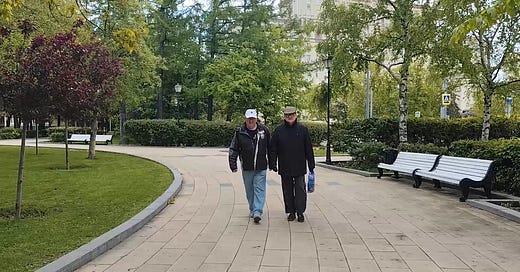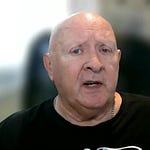On Sunday, May 11th, our dear friend, Vladimir Kozin, took us on a four hour tour that included the Novodevichy Convent, and the Novodevichy Cemetery in central Moscow.
The Novodevichy Convent, in south-western Moscow, built in the 16th and 17th centuries in the so-called Moscow Baroque style, was part of a chain of monastic ensembles that were integrated into the defense system of the city.
The convent was directly associated with the political, cultural and religious history of Russia, and closely linked to the Moscow Kremlin.
The convent consists of 14 buildings, including 8 cathedrals, a shrine, 4 churches, and a number of residential and service buildings.
During the Soviet years, the Novodevichy Convent was closed.
In 1920, the monastery was transformed into an Orthodox brotherhood, which included about 1,000 people - 200 nuns and parishioners.
In 1994, under the leadership of Abbess Seraphima (Chernaya), who came from the hereditary noble family of Chichagov, the revival of monastic life began in the monastery and continues to this day.
In 1994, under the leadership of Abbess Seraphima (Chernaya), who came from the hereditary noble family of Chichagov, the revival of monastic life began in the monastery.
Novodevichy Cemetery, adjacent to Novodevichy Monastery, is one of the most famous necropolises in Russia. At first, nuns were buried here, then merchants, and in the 19th century, politicians, soldiers, scientists, artists and other famous people began to be buried here.
Novodevichy Cemetery is crammed with hundreds of sculptures and monuments of the highest craftsmanship and quality.
During the Soviet Union, burial in the Novodevichy Cemetery was second in prestige only to burial in the Kremlin Wall Necropolis.
Since the fall of the Soviet Union, the Kremlin Wall is no longer used for burials and the Novodevichy Cemetery holds the tombs of Russian authors, musicians, playwrights, and poets, as well as famous actors, political leaders, and scientists.
The entire cemetery is immaculately clean and very well maintained.
More than 27,000 people are buried here. Notable burials include Boris Yeltsin, Mikhail Gorbachov, Stalin’s second wife, Nadezna, and Anton Chekhov, whose burial site we visited and where Tanya placed flowers and a lighted candle.
Hundreds more are buried in the walls of one very old section.
The cemetery is divided into three sections: the old, the new and the newest.













Share this post